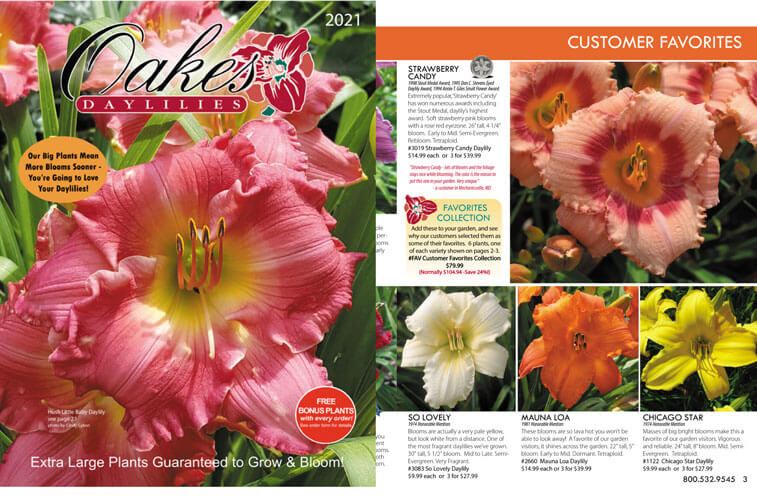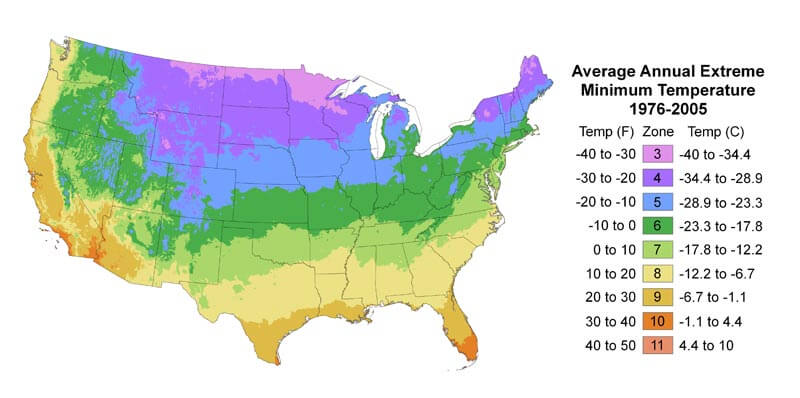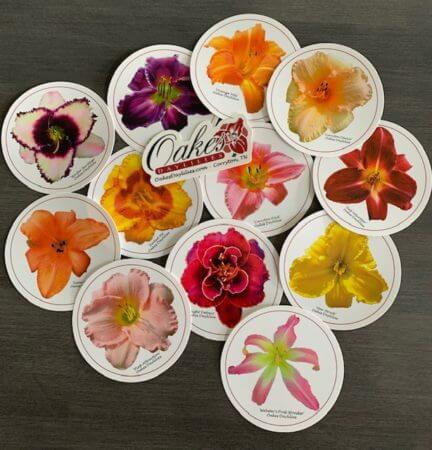How to Grow & Care for Daylilies
Your burning daylily questions, answered!
Which Daylilies Can I Grow?
When can I plant daylilies?
Spring is a great time to plant daylilies, just wait to plant until after the danger of hard frost has passed. Fall is another good season for planting, try to finish planting 4-6 weeks before your first hard frost. You can plant earlier in the spring or later in the fall if you take care to water and mulch your newly-planted daylilies. In most areas, you can plant daylilies in the summer (here at our nursery we plant straight from March through October), just be sure to give your newly-planted daylilies plenty of water. Gardeners in the hottest areas of the country can often plant straight through the winter, but may want to avoid planting in the heat of the summer.
Spring shipments should arrive after the ground has thawed and danger of hard frost has passed. Fall shipments should arrive several weeks before freezing weather, although you can plant later if you mulch the plants.
Where can I plant daylilies?
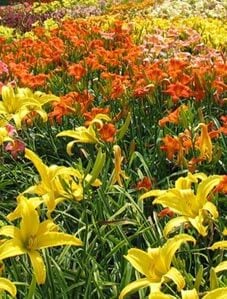
Sun: Daylilies love sun, full sun if possible, but will tolerate part-shade conditions. A general rule is to make sure they get at least 6 hours of direct sun a day. Many darker colored varieties will benefit from partial shade in the hottest part of the day.
Soils: Daylilies will grow in a wide range of soils, from sand to heavy clay, and in a wide range of soil pHs. There are steps you can take to improve your soil, especially if it is predominantly clay or sand. Clay soils can be improved by the addition of compost, humus or peat moss, or sand which will help make it more friable. Sandy soil will benefit from the addition of compost, humus or peat moss which will serve to increase water retention.
Drainage: Daylilies prefer well-drained soil. In problem areas, one way to achieve adequate drainage is to prepare raised beds.
Other Plants: To avoid root competition for water and nutrients, do not plant daylilies near shrubs or trees if possible. If you can’t avoid it, be sure to give them extra water and fertilizer to make up for what the other plants take. An exception is in the South, where daylilies perform well under pine trees, benefiting from their dappled shade.
To help prepare for your daylilies, work your ground in advance, incorporating organic material such as compost or well-rotted manure if possible.
Will Daylilies Grow in a Container?
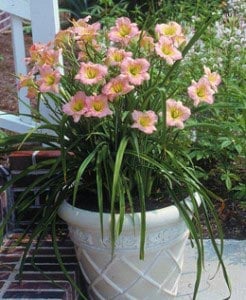
Yes, but you have to make sure to have a large enough container, and you have to keep them well-watered (every day in the summer heat). For smaller-stature plants (typically the ones with smaller blooms), you’ll want at least a 12″ diameter pot, 15-18″ will be better. Larger varieties will need larger pots.
In zone 7 or colder, you will need to protect your potted daylilies over the winter. Here at our nursery, in zone 6/7, we put our potted daylilies in an unheated cold frame. Other options for protection would be to bunch pots together and cover with straw, or to put in a crawl space or garage. The colder your winters, the more protection they will need, because daylilies may very well die if your pots freeze solid.
When can I divide my daylilies?
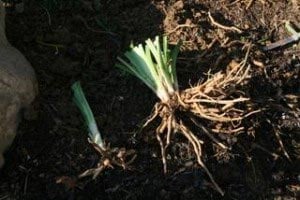
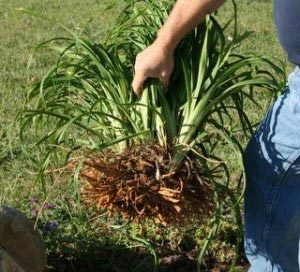
You can divide any daylily clump that has two or more plants (fans), but you typically would want to wait until the clump was large enough to make at least two good-sized units with at least 3 fans each. If you divide them too small (like the plant on the left in the far right picture), they probably won’t bloom for a season or two. For more information on How To Divide Daylilies, visit our YouTube page for video instructions.
Spacing
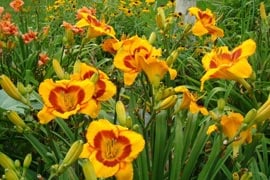
Daylily plants come in a wide range of sizes, but here are some general guidelines to follow:
• Small Flower & Miniatures: 16″ to 24″
• Large Flowers: 18″ to 30″
• For a closer bed or border: 12″ to 18″
Some varieties increase very rapidly and will become crowded over time; sooner the closer you plant them. If you notice a decrease in blooms because of crowding you will want to divide your daylilies.
How can I control weeds around my daylilies?

Mulching your daylilies and hand weeding are the best ways to control weeds in daylilies. They aren’t too particular about what kind of mulch. There are chemicals available to control grasses in daylilies, check with your local extension agency or garden center for what is available in your area.
Do I need to spray my daylilies?
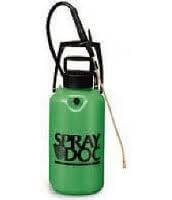
Typically, no. We usually get this question when someone notices damage on their daylily blooms, perhaps caused by thrips or aphids, and usually early in the bloom season. We occasionally have some damage in our display garden (such as spotted or misshapen blooms), but we’ve found that after the first few days of the season we don’t see that damage anymore. So, we don’t spray our daylilies with anything. Feel free to give us a call or email with any additional spraying-related questions.
What kind of fertilizer to use, and when?

Daylilies aren’t picky about fertilizer. We typically use a high quality, nitrogen rich fertilizer each spring before the daylilies begin to bloom. Slow release fertilizer, liquid fertilizer, compost or well-rotted manure are all good choices as well. Daylilies love nitrogen so it’s important to use a mix that is high in nitrogen. It is always a good idea to have a soil test done, especially if you feel like you have an unusual soil situation.
Are you a visual learner?
You need to visit our YouTube channel! Our videos are short but informative and cover a range of topics. PLUS—we are always adding new ones! If you are interested in How to Plant Daylilies, the difference between Evergreen and Dormant varieties (and which is the right fit for your garden) or 30 seconds with Orange Vols (and other daylily varieties), we’ve got you covered!
We’re here to help!
Complete planting information is included with every order. And always, if you have questions or concerns, please visit our YouTube channel to review our instructional videos, call us at 865-687-3770, email us at [email protected], or write us a note (our address is below). We want you to be successful and happy growing daylilies!
